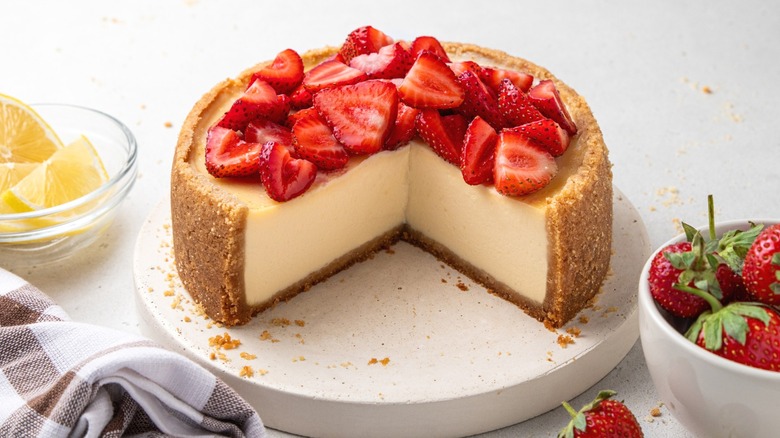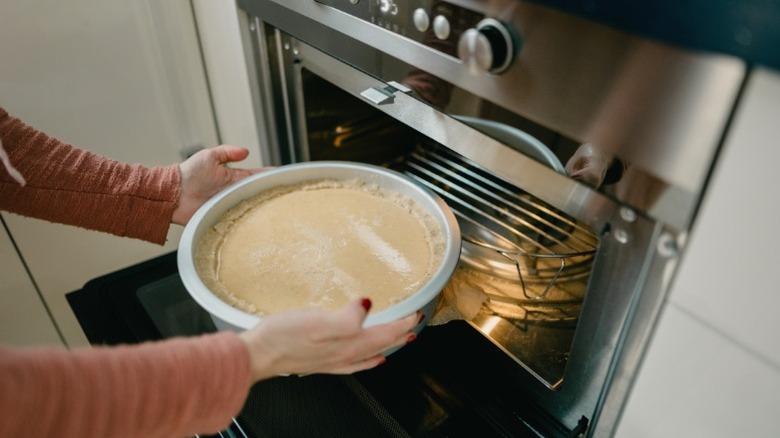Why Your Cheesecake Is Cracking And How To Stop It
If cheesecake is good enough for "The Golden Girls" (You can always thank cheesecake for being a friend), it's good enough for you. A nice cold slice of cheesecake, with its graham cracker crust; its creamy, custardy filling; and whatever sweet, fruity topping you like best, hits like nothing else when you're in the right mood. But, what's this? You put your cheesecake in the oven to bake, only to later find what appears to be the San Andreas Fault streaking across its surface. What caused this unsightly crack, and how can you make sure it doesn't happen again? We asked Yami Mercado, the pastry chef at the Chicago Athletic Association, who explained that the cracks have to do with egg proteins.
"Cheesecake is basically a custard, so when it's left in the oven too long, the protein in the eggs tighten and cause the splits," Mercado said. If you're seeing these imperfections, she suggested, "Those cracks are due to overmixing and incorporating too much air. Another culprit is overbaking." With a proper bake, the egg proteins in a cheesecake cohere into something sturdy, if not a little bit jiggly; if you bake it too long, however, those egg proteins get too stiff and start to separate from more fluid ingredients, resulting in those deep gashes along the surface. But, don't worry, it's one of the common mistakes people make when baking cheesecake — and it can be prevented.
Handle your cheesecake with care
So how do you keep your cheesecake from looking like the surface of some distant, blighted moon? Yami Mercado had a few suggestions. "Cheesecakes are delicate and must be treated gently," she said. "I only bake until the edges are set and the center jiggles slightly." Exactly how long that takes will depend upon your specific oven, as well as the size of your cheesecake, but in general you should avoid baking until it's all the way set — that's how you get an overbaked cheesecake, which is how you get those cracks.
There are other ways to avoid that terrible fate, too. Although you need to mix the eggs to some degree when you add them to the batter, you don't want to overmix them, as that will result in a stiff, inelastic, crack-tastic cake. And when you finally do take the cake out of the oven, Mercado warned, be sure to account for cooling time. "Cheesecakes continue to cook while they cool," she said. "I cool down my cheesecakes gradually in the oven with the door cracked open, or I let it cool at room temp before placing it in a cooler." Of course, you could avoid all of these steps by buying a cheesecake from a bakery, or at least, by making a three-ingredient no-bake cheesecake. But if you're keen to master this skill, these are all valuable pieces of advice.

